-
How to create a wildflower meadow – the easy way!
 Lee Burkhill: Award Winning Designer & BBC 1's Garden Rescue Presenters Official Blog
Lee Burkhill: Award Winning Designer & BBC 1's Garden Rescue Presenters Official Blog

When you think of meadows, you may think of acres of rolling hillside, Julie Andrews, and lazy summer days. However, the wildflower meadow is under threat from the overdevelopment of green spaces. So now, a number of gardeners are looking to recreate smaller versions of these in their own gardens, helping to create a refuge for nature and increase the beauty of their gardens in fighting back the tide of concrete.
This guide will show you how any size garden can benefit from either a mini meadow or at least incorporating some fuss-free, wildlife-friendly plants. Both to bring wildlife and a sense of relaxation to your garden no matter what size.
There are two main types of wildflower meadow which you have to choose from. One is the fast annual meadow that needs to be reseed each year, and the second is the perennial meadow that takes longer to get going but is less temperamental to weather or seasonal changes. Whichever you choose has its benefits and drawbacks, which I'll explain in this article.
An annual wildflower meadow is based on a mix of annual (single-season) plants that are grown, flower, set seed, and then die each year. These annual meadows often feature more showy and varied flower colours.
Contrary to many people's belief, they are hard to establish and maintain without significant input each year. You're either going to be sowing seeds or laying wildflower turf to start your meadow.
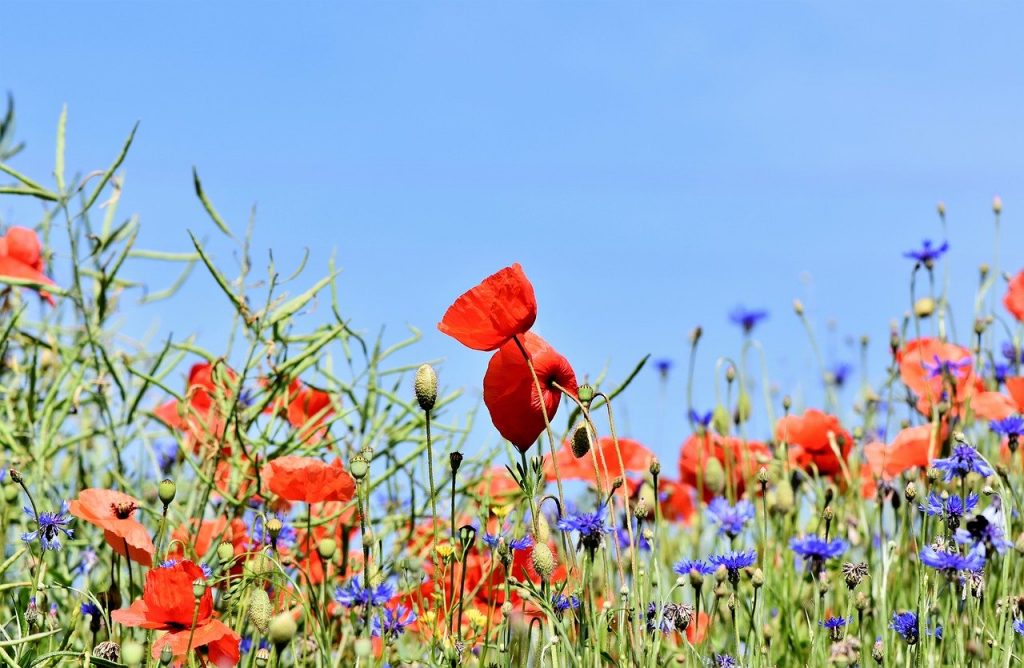
If you've been led to believe all you need to do is scatter a wildflower seed mix down on the lawn or some open ground, then sit back with the Chablis, you're sadly wrong. Your chances of success and germination deteriorate severely without significant preparation and removal of weeds or existing plants.
Below is an example of some of the annual wildflower seed species you may find. Sometimes, these are pre-mixed in packets with a number of other native and non-native species. They are used mainly for first-year colour with some establishment each year after.
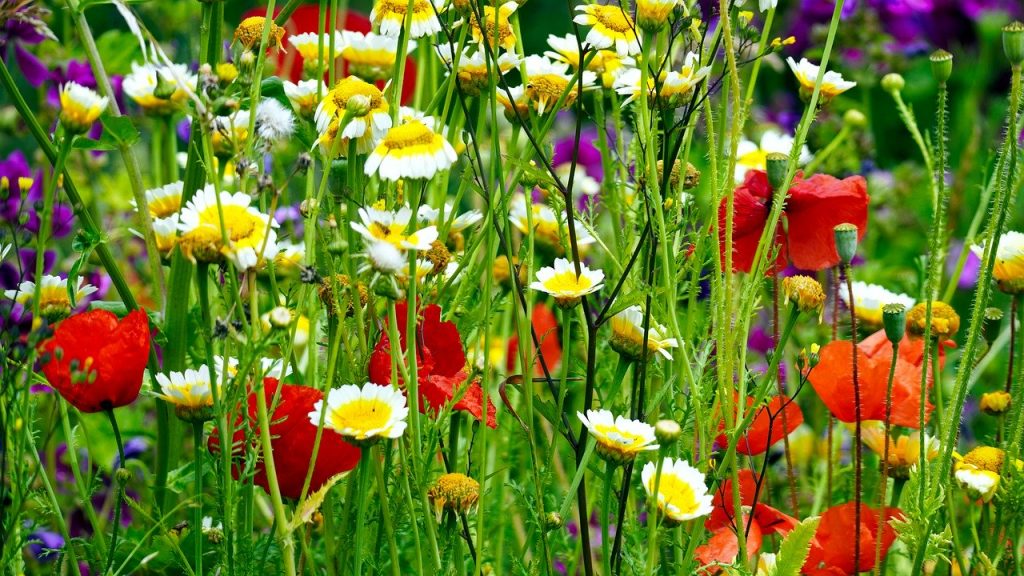
The drawbacks of an annual meadow are the amount of initial preparation to get the seed mix to germinate and establish. These annual meadows require really poor soil to germinate and will not usually succeed if grasses or other weeds are present. This means you have to strip any turf or weeds from the area before sowing. If you have very fertile ground, these seeds will struggle to take.
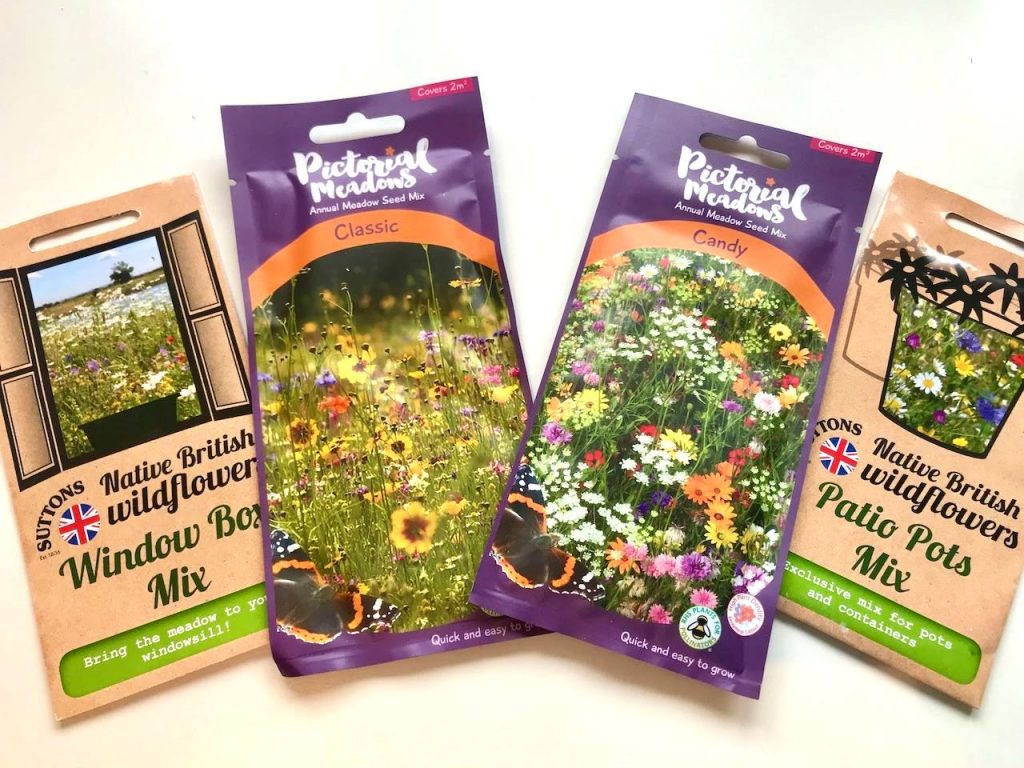
More often than not, I hear from people who have tried to sow annual meadows, but either failed to prepare the site properly or too high a soil quality scuppers their efforts!
You're also totally reliant on self-seeding each year. So you must leave your meadow to flower, set seed, then distribute it naturally. This is why, in year two, a number of species may disappear as they don't manage to set viable seeds or more competitive species outcompete them.
Whilst I love annual meadows, I'm also a fan of saving both time and effort in the garden. Especially with new gardeners where failure can often put them off continuing! I also have a niggle with creating picture-perfect meadow mixes that, in reality, would never thrive each year without huge amounts of interference. So, I always prefer to use perennial native wildflower species instead when planting meadow mixes.
You may not get every colour under the sun, but you can create a far more sympathetic and longer-lasting effect, which both benefits wildlife from continued pollen/food sources and you the gardener, from not having to reseed every year!
In my experience, they can compete with grasses, especially if some Toadflax is added to the mix. I also find it gets back to the true essence of what a meadow is without it being too fiddled with for Instagram-worthy beauty alone.
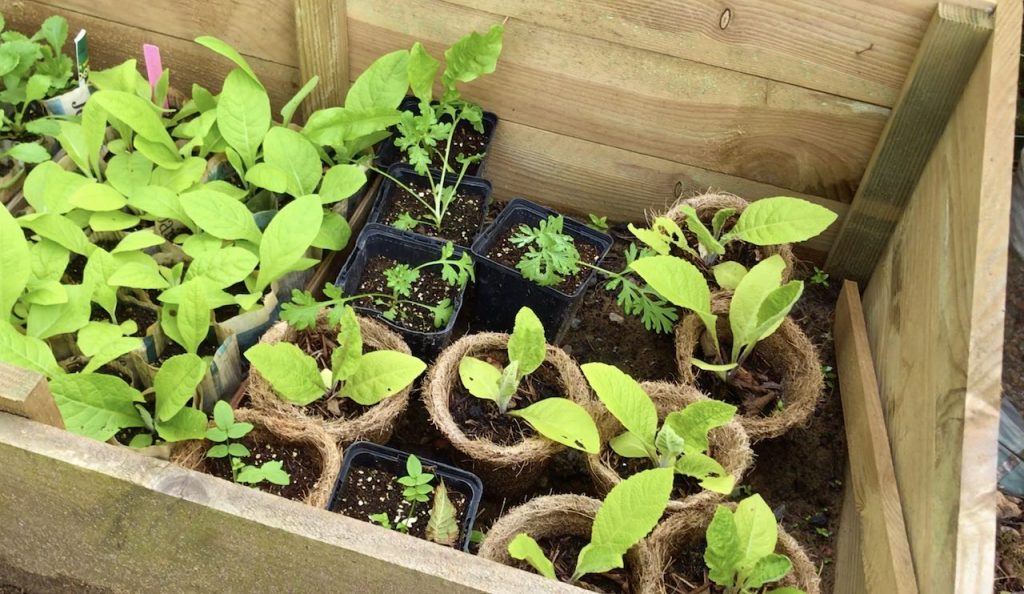
I use the following mix here in the UK for my meadow planting. Proven as either tough UK natives or real 'doers' in the garden, these species can quite happily tolerate a bit of competition and come back year after year. You're not going to lose sleep on your well-earned summer holiday in Spain that they may not get pollinated before Autumn comes!
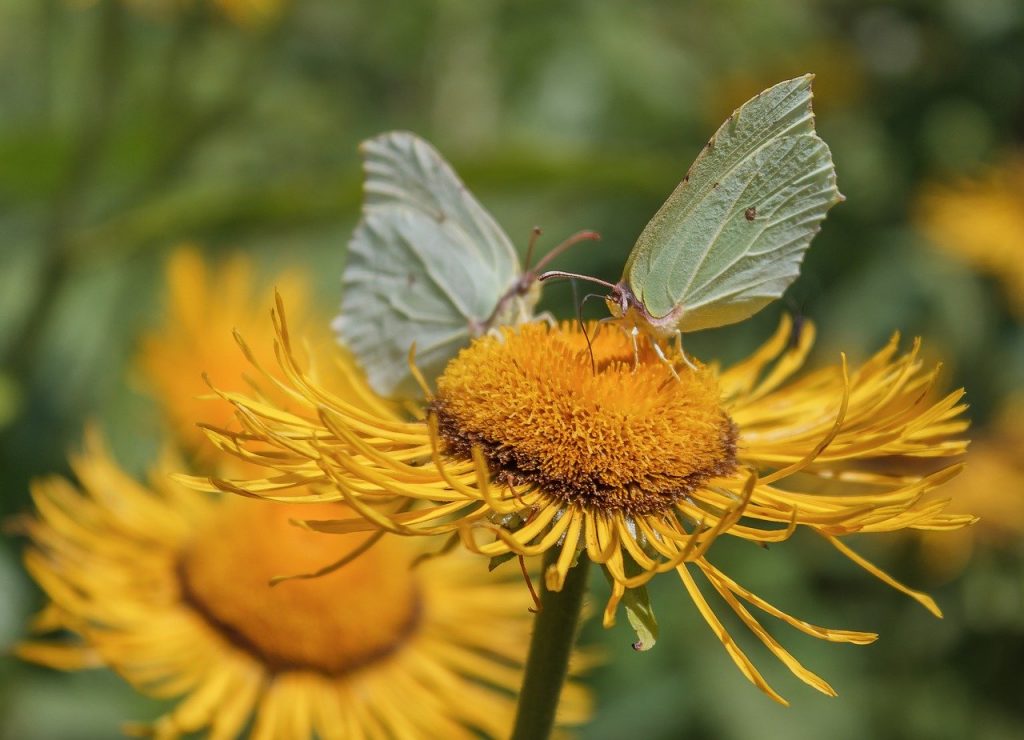
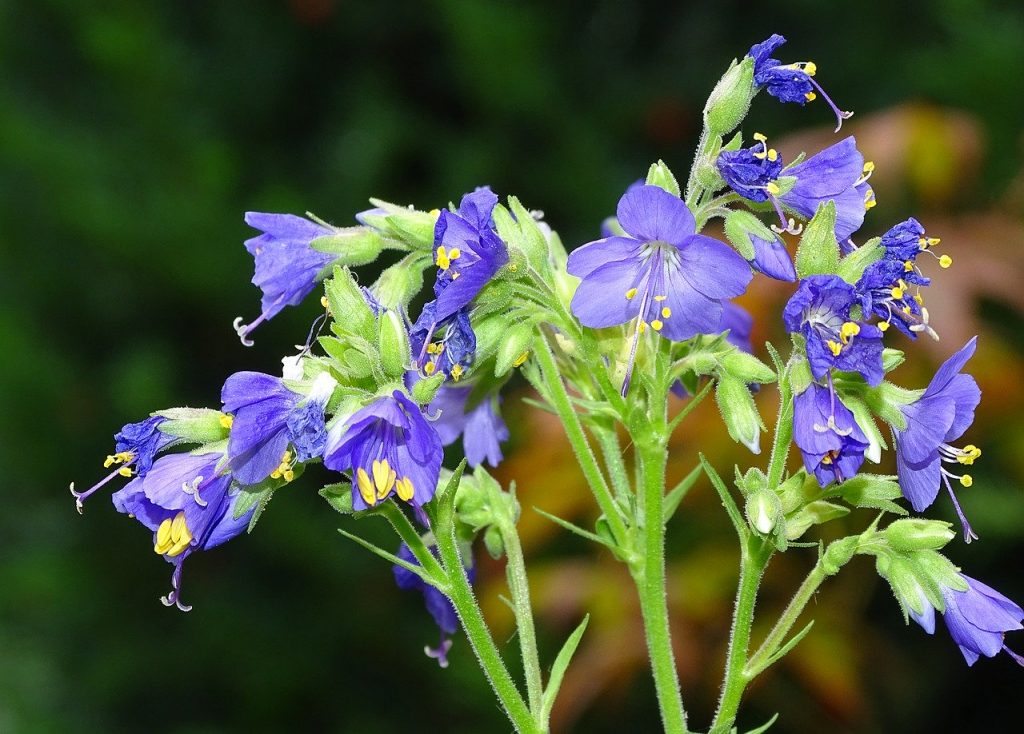
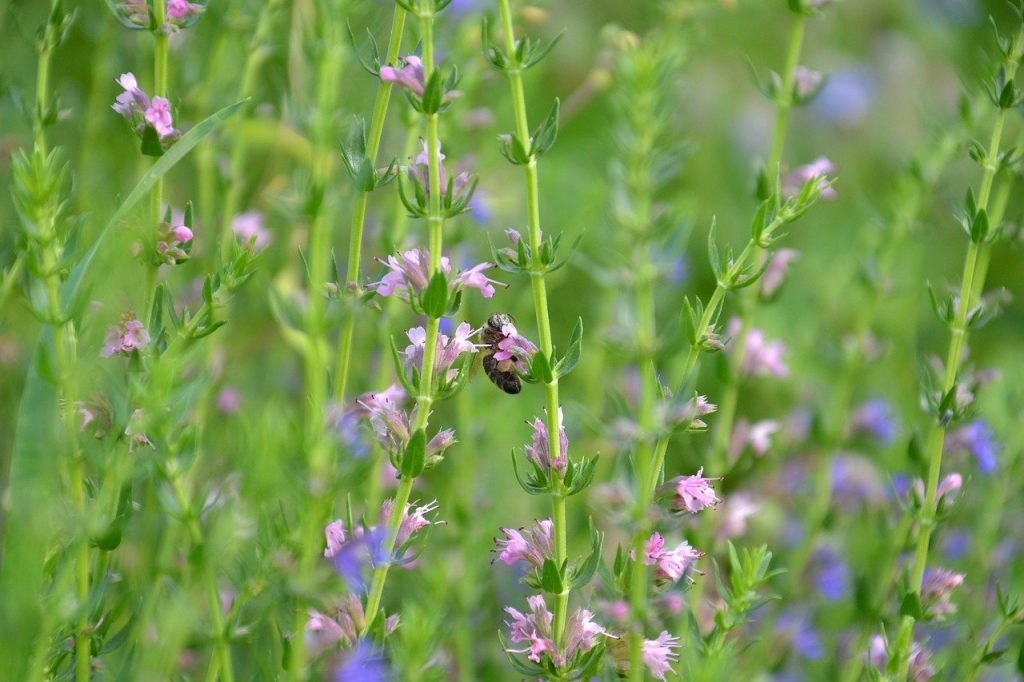
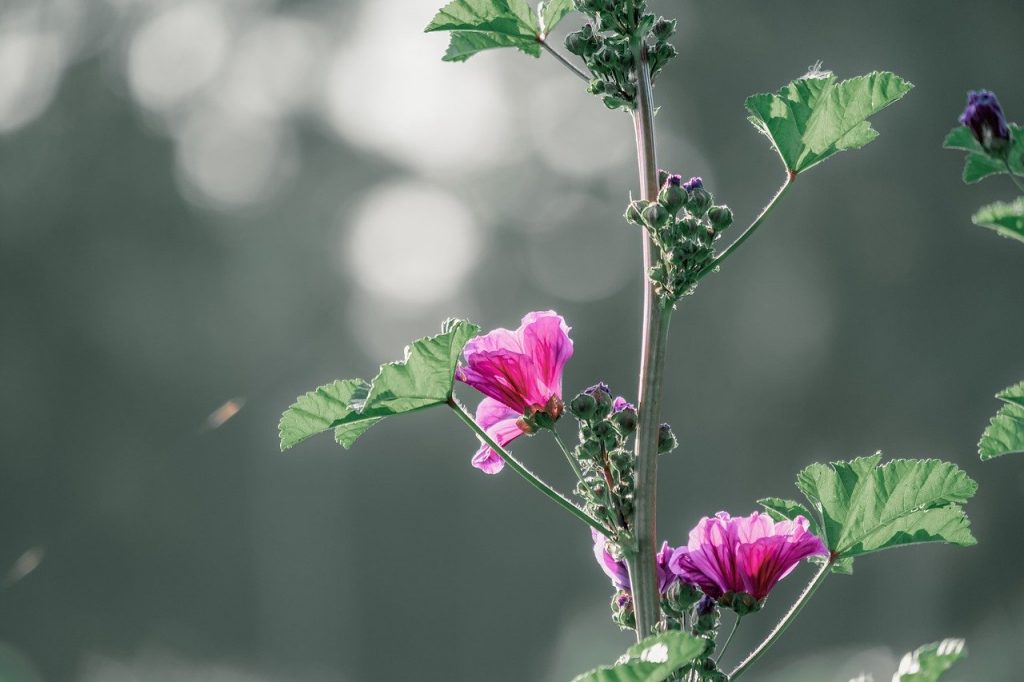
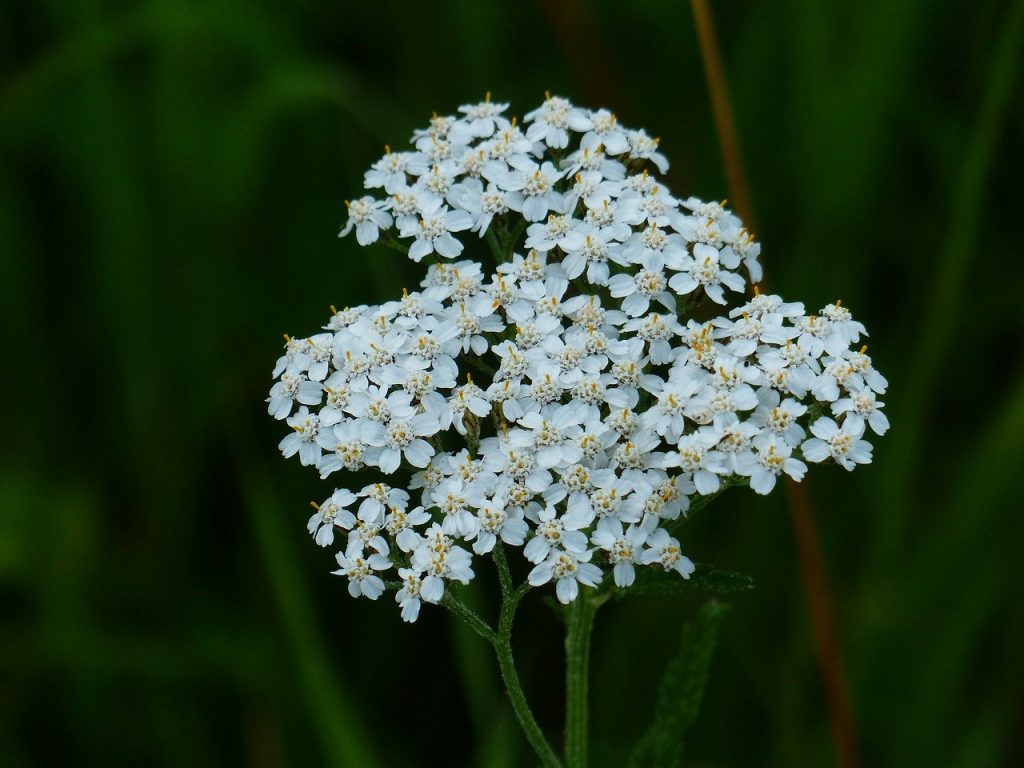
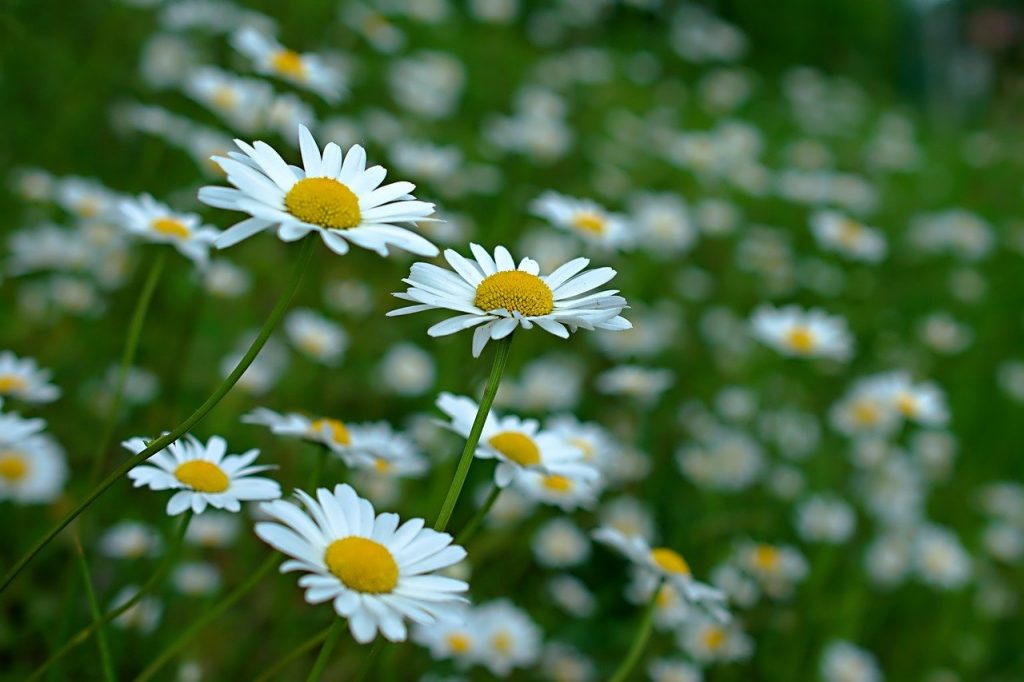
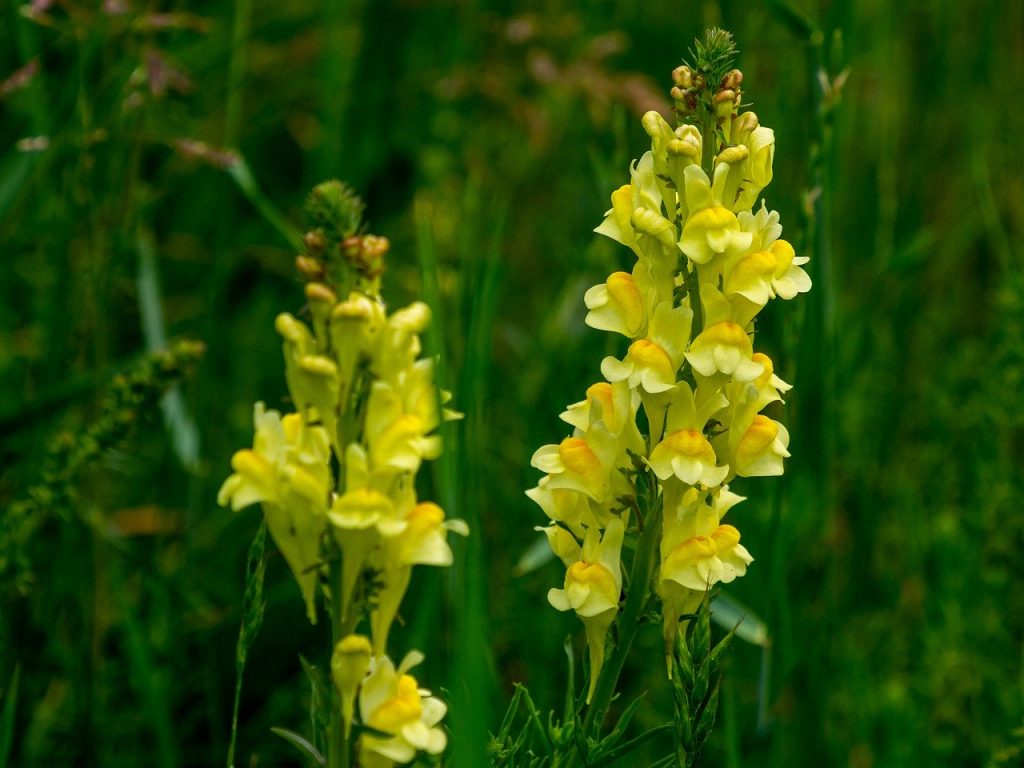
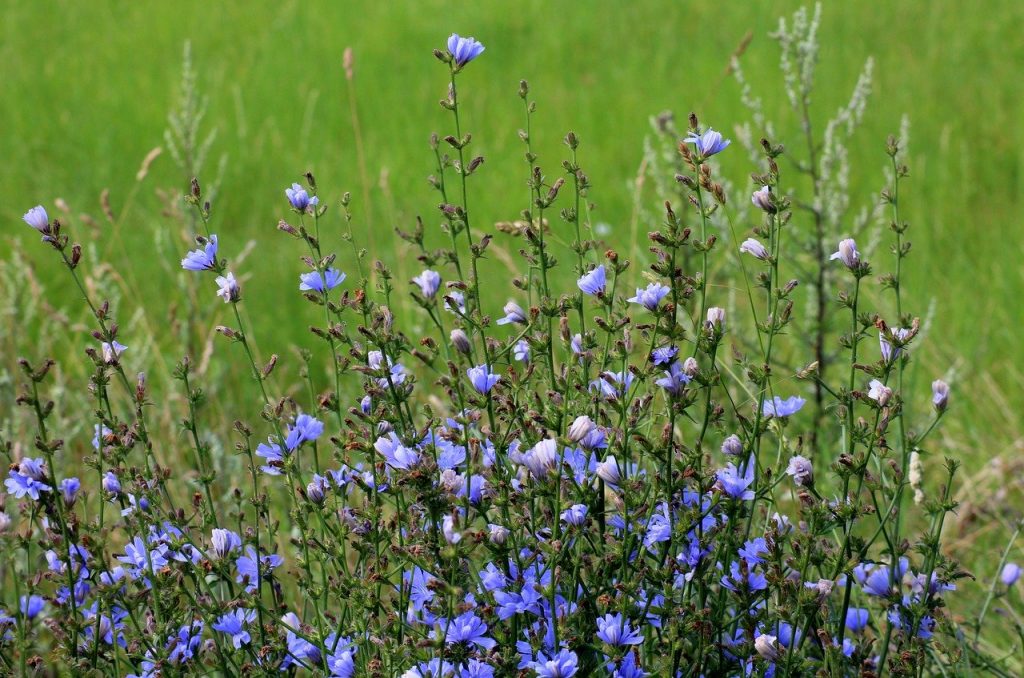
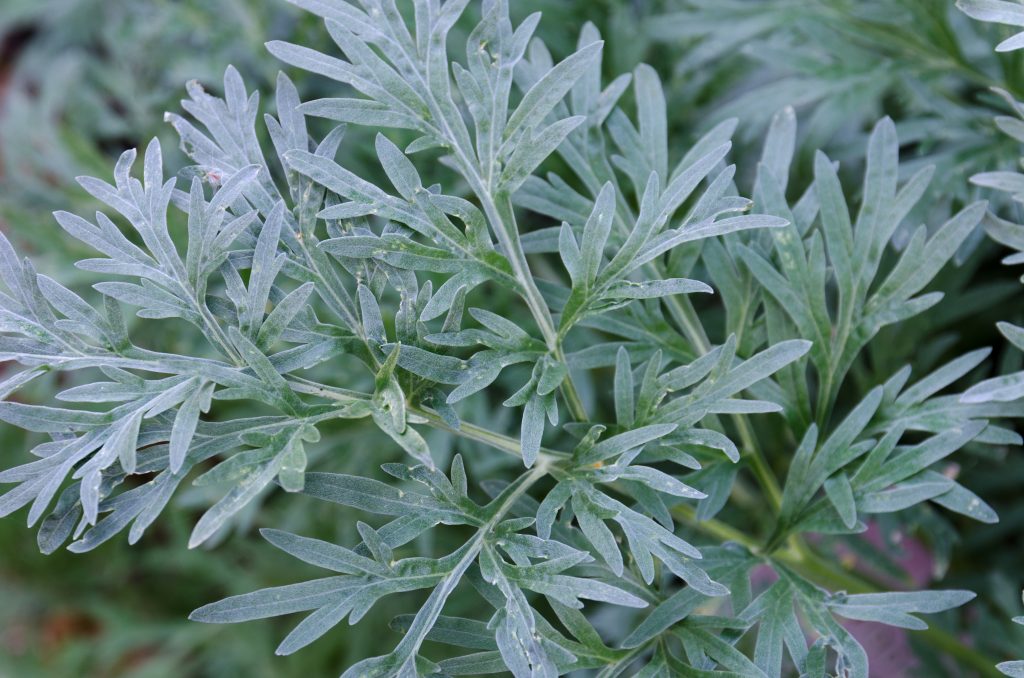
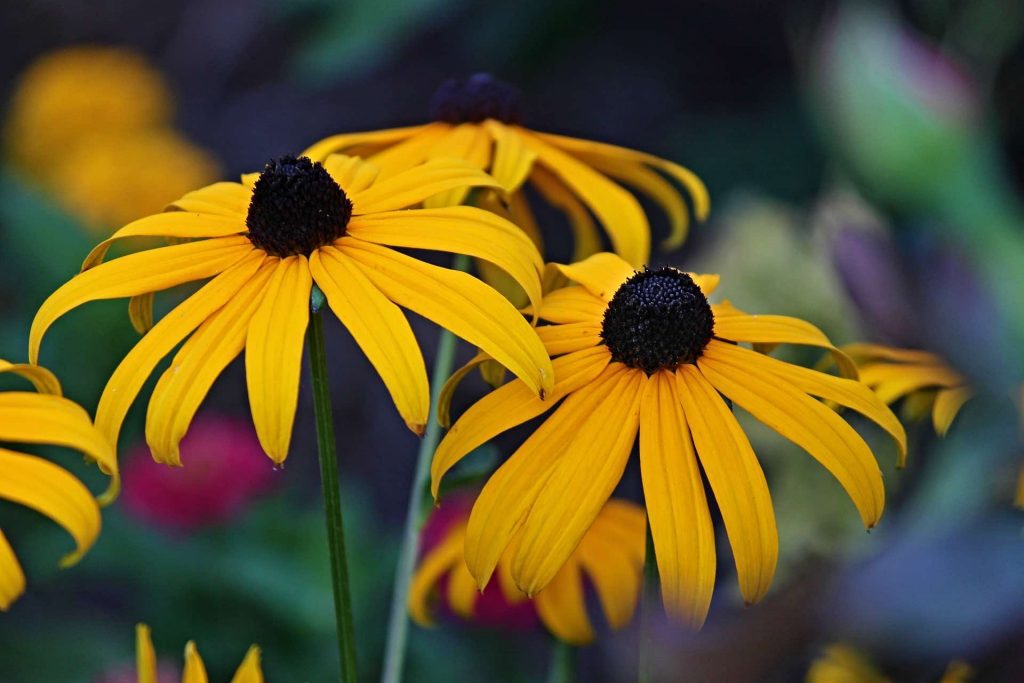
Ok, so let's get down to business with my guide. Planting out a perennial wildflower meadow is far easier to do and more cost-effective than laying annual meadow turf or having to spend weeks removing turf to then reseed. This is because you're only paying for the seed, some compost and then your own time in sowing them on a window sill or greenhouse.
My method is to grow all of your own perennial wildflowers from seed which is both super cost-effective and far more fun than the drop-and-run approach of annual seeds. You'll also get to really know your meadow plants and get a real sense of achievement as you watch them germinate. I have grown all of the above plants time and time again with no drama. So this is a real foolproof way of creating a wildflower meadow.
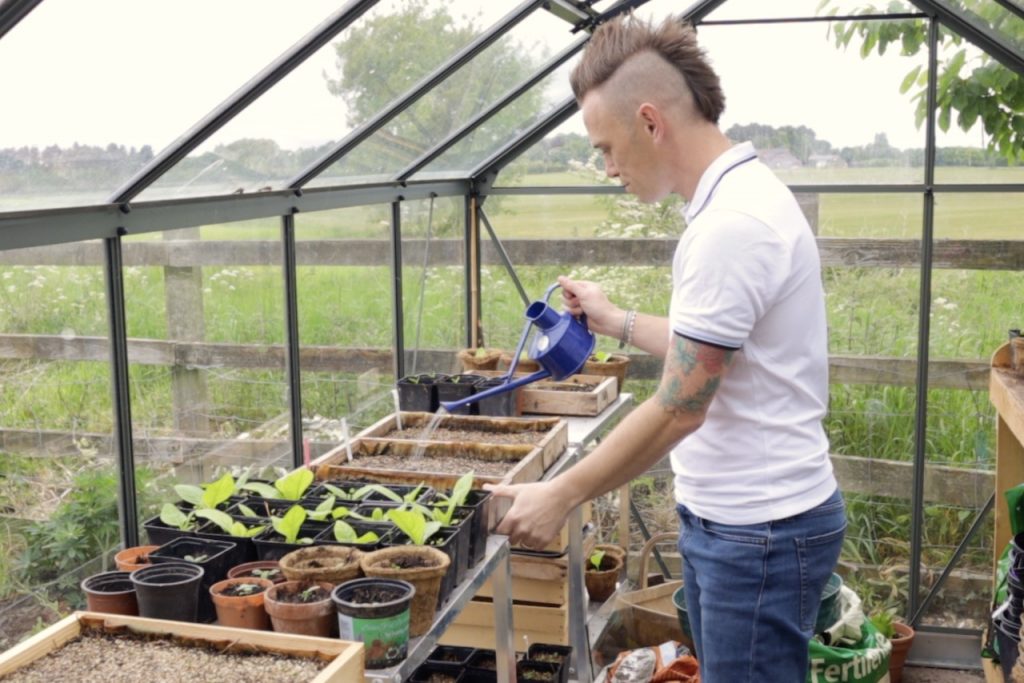
Lastly, this method allows you to scale the meadow up and down by growing plants according to the size of the plot. Whether it is a meter-wide strip at the end of a lawn or 4 acres of the grassy paddock!
Step 1: Choose a mix of herbaceous perennials and wild flower candidates. The list above is not exhaustive but gives a nice mix of pink, blue, white and yellow wildflowers. Most of which are either native or have herbal properties (always triple-check plant idents before eating or using them!).
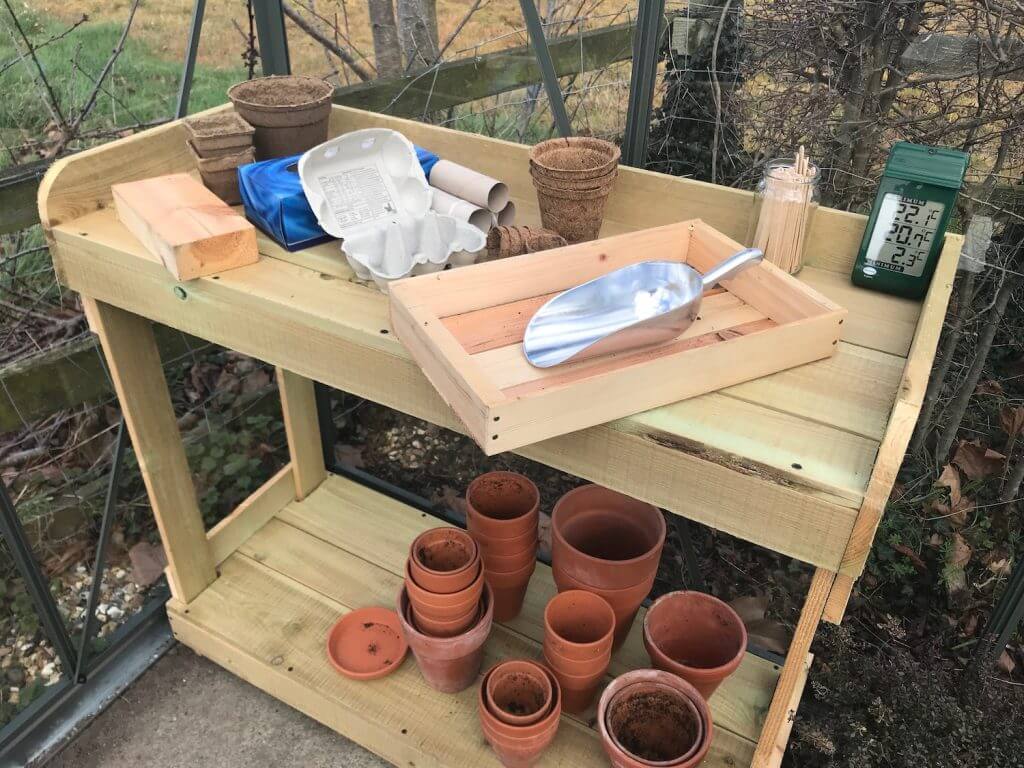
Step 2: As soon as spring arrives, i.e. March in the UK, start to sow your wildflower seeds under glass or on a window ledge. (There's more detail on sowing seeds here and below). Remembering to sow them thinly and get ready to have many more plants than you initially expected. Good news for your friends and family!
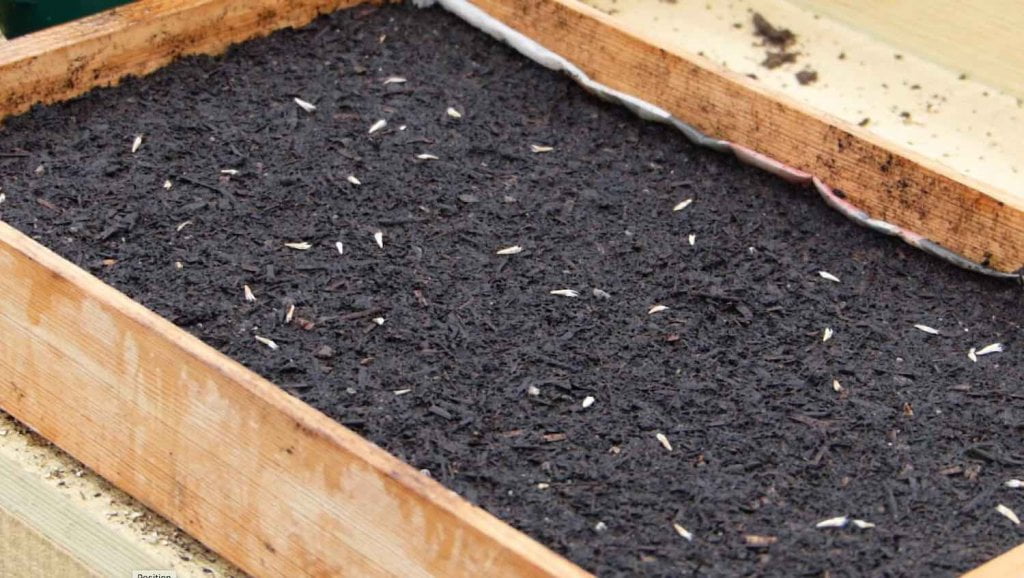
Step 3: Once your seeds have germinated and put on some growth, pot them on and then harden them off a few weeks after.
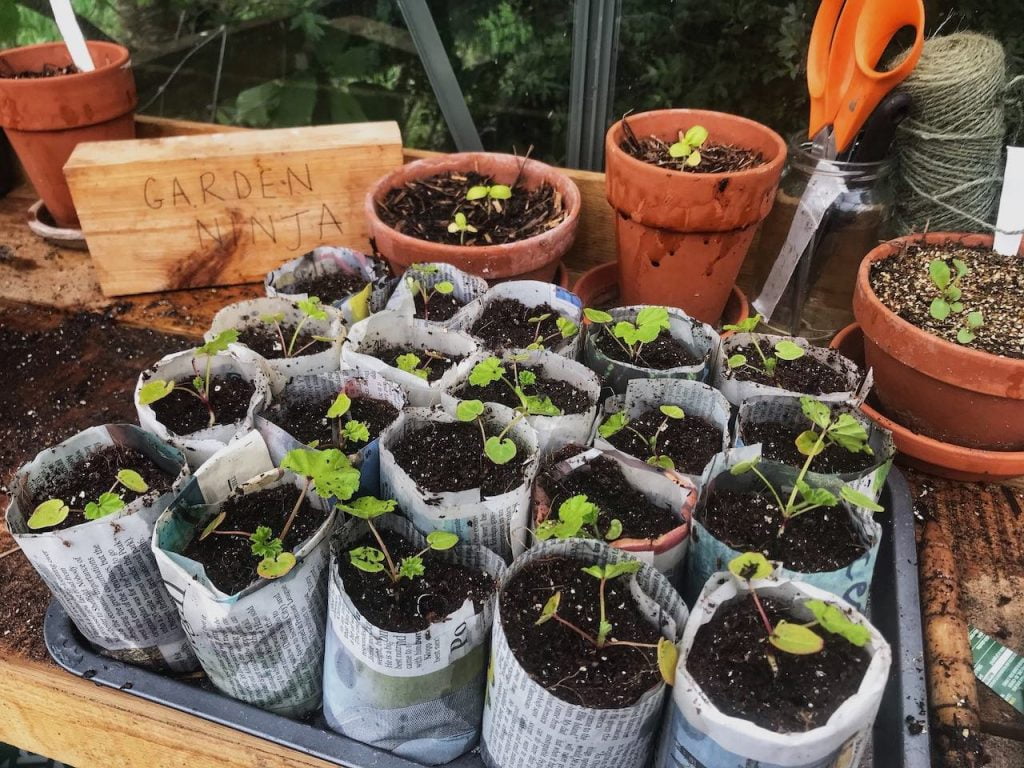
Step 4: Choose a suitable area for your wildlife meadow. It may be at the bottom of a lawn or an unloved border that's a bit lacklustre. Ideally, you want to remove as many perennial weeds as possible. Though with this method, you don't need to totally cultivate the ground if it's in okay condition.
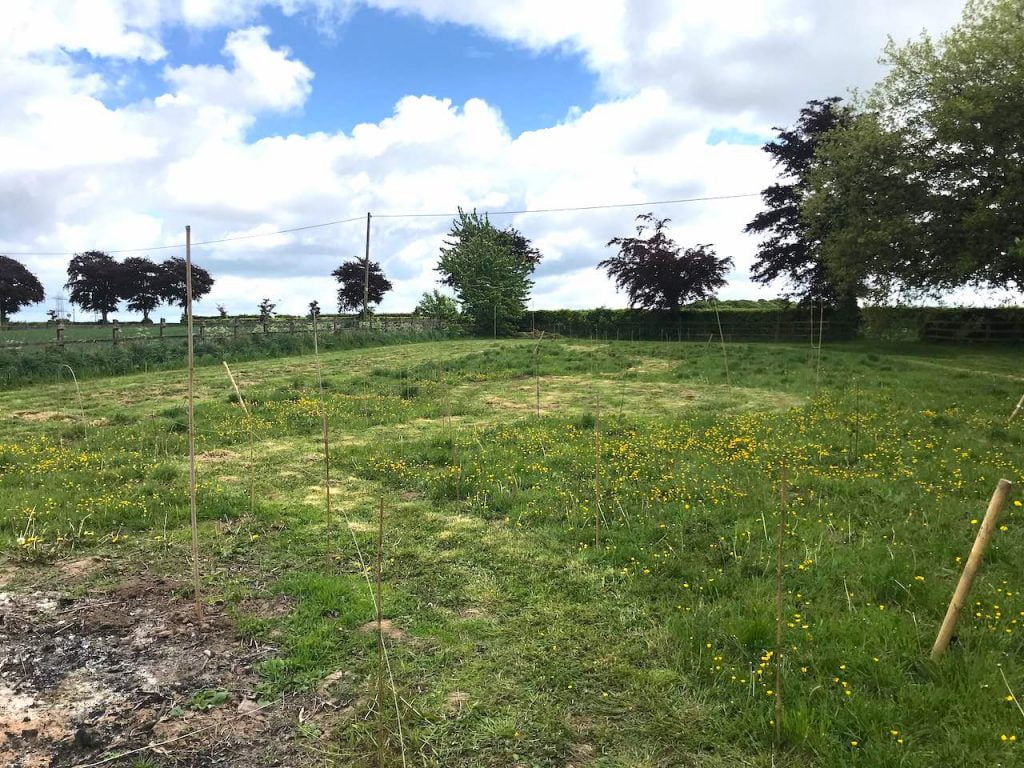
Step 5: Work out how many plants you need for this area - or use the amount you have to dictate the space you'll be giving over to the mini meadow! Ideally, space your plants about 60cm apart. Always check the ultimate height and growth. Planting closer than this can lead to them competing with each other. A 1m x 4m strip of the lawn may only need 5-10 plants, depending on the species.
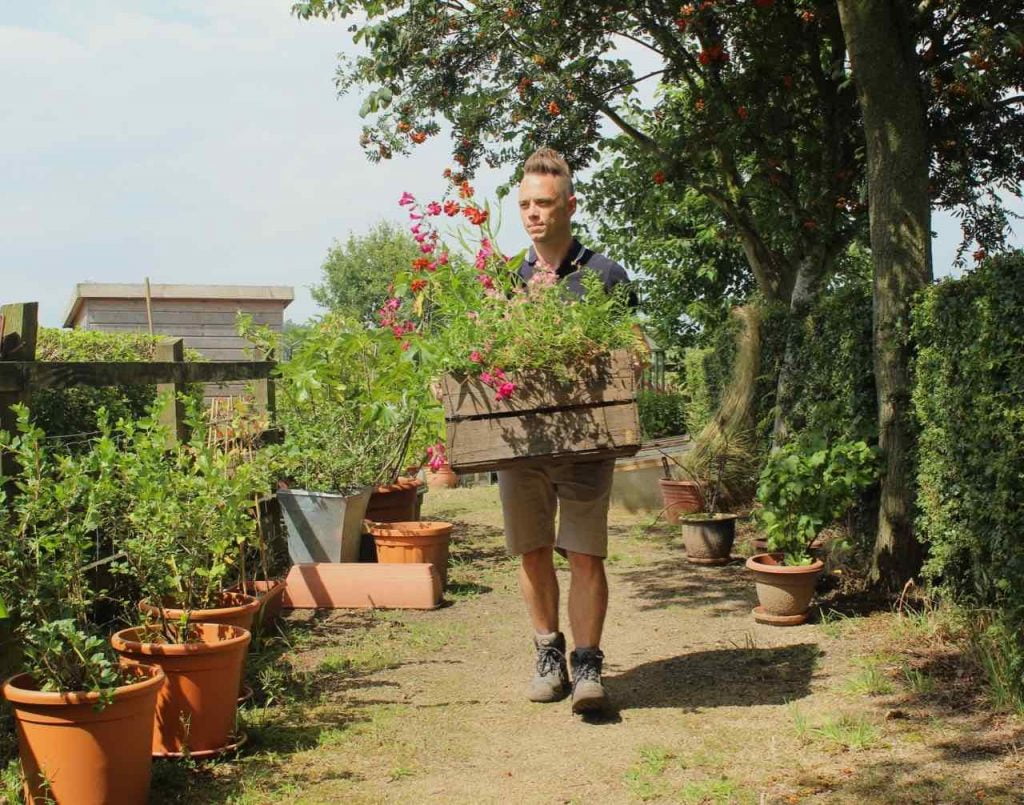
Step 6: If planting in a lawn, dig out a circle of turf that's 30cm in diameter around the small plant. Remove the turf and then plant in your wildflower plant. This gives it a better chance of survival. I also keep the grass around these plants cut short, so they get the best access to light and water whilst they establish. I try and plant in drifts of different plants for a more natural look rather than a formal pattern.
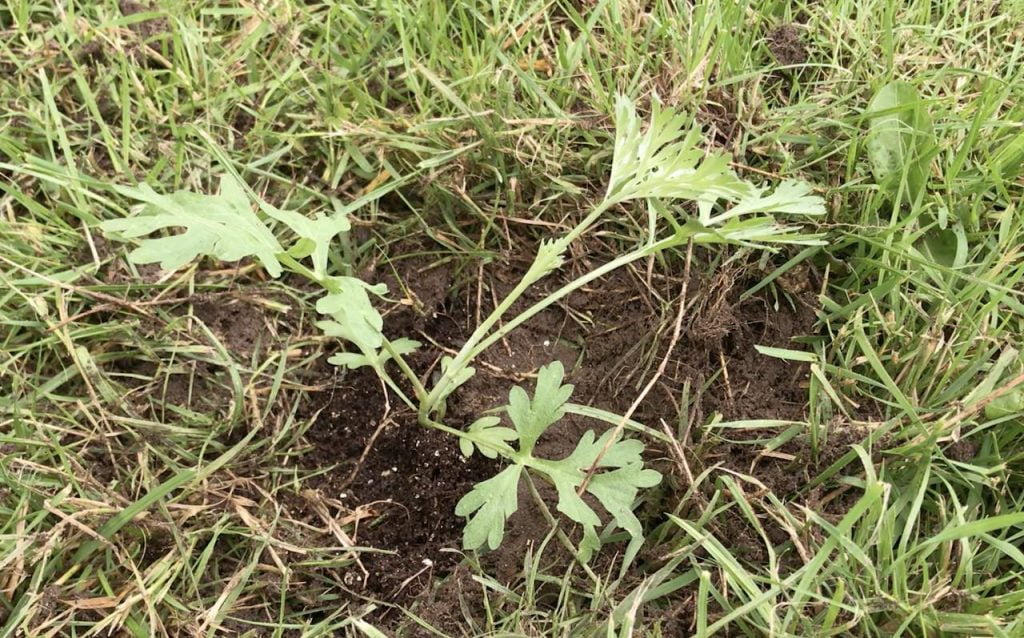
Step 7: Keep your new plants watered and free from weeds and grasses immediately around them for the first year. This enables them to get established. In the first year, they probably won't flower but will establish their roots.

Step 8: Now for the brutal part. In October, when the season is over, mow over or scythe back the entire meadow area. Remember that these herbaceous perennials and grasses will come back. This is essential. If not, you will end up with a crispy brown mess come spring. I then mow again in early March the following spring and then leave the meadow all season until October again. It really is mega-low fuss once it's established!

The final thing to note is that we are not trying to completely remove weeds or grasses from growing. A true meadow mix has an abundance of weedy plants and grasses mixed in. This is what makes it so rich and diverse for wildlife. What we are aiming to do is add a few more flowering specimens to stop the area just turning weedy and monotone with its plants.
Growing all wildflowers from seed under glass or on a window ledge couldn't be simpler. Most of these species require nutrient-poor soil to germinate, so always use seed compost where possible. I've also used 'spent' compost sometimes, i.e. compost from a tub of annuals that have finished the year before.
There's no quick way to establish a wildflower meadow. Any new meadow will take at least 2 years to flower.
Whether you're sowing annual seeds or growing herbaceous perennials, as I've chosen, it's year 2 when you see results. With the perennial method, you've got a greater chance of success as the plants are already growing when you plant them. However, you will get far brighter colours with an annual mix if you prepare the ground and make the effort to get it going.
Once you've got your wildflower meadow going, though, it's relatively easy to maintain. There is no real need to water or weed. Just cut back in early spring and again in October when the seasons finished. if you want to watch my series on wildlife garden design for more hints and tips, please check out the playlist below and make sure you follow me on Social Media.
Maintaining a wildflower meadow versus an ornamental lawn involves different considerations due to their distinct characteristics and purposes. Whilst a meadow is more hands-off for the summer, there is more maintenance in spring and autumn, whereas cutting a regular utility or ornamental lawn is a lot more of a slow drip in weekly mowing.
For a meadow, maintenance typically involves less frequent mowing, allowing the wildflowers and grasses to grow naturally and bloom. Mowing twice a year, typically in late summer and then in early spring, helps prevent the area from becoming overly dense and allows wildflowers to reseed. Removing excess thatch and debris after mowing can also promote healthy growth. Remlving thatch is the real time burn and requires a lot of effort.
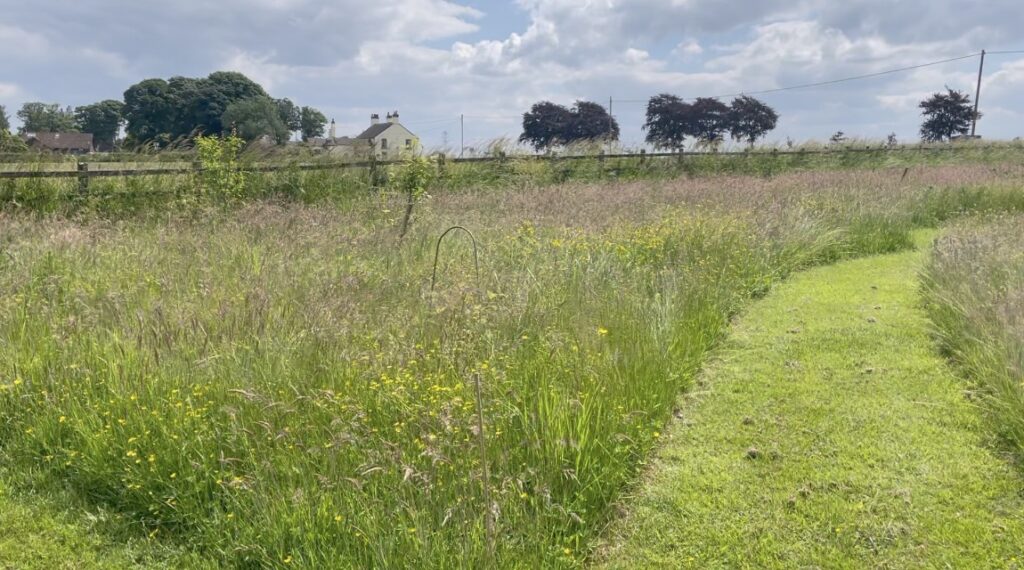
In contrast, an ornamental lawn requires more frequent mowing, often weekly during the growing season, to maintain a uniform and manicured appearance. Additionally, ornamental lawns may require regular fertilization, weed control, and irrigation to sustain their lush green appearance. You can usually mulch a lawn to reduce the time required.
Furthermore, meadows tend to be more tolerant of varying soil types and moisture levels, making them suitable for areas where traditional lawns may struggle, such as slopes or poorly drained soil. However, it's essential to select native or adapted wildflower species suited to the local climate and growing conditions to ensure success.
Overall, while meadows may require less intensive maintenance compared to ornamental lawns, they still benefit from occasional management practices to encourage biodiversity and preserve their natural beauty. Don't be fooled that a meadow is maintenance free, they are not!
Creating a wildflower meadow offers numerous benefits, both for the environment and for personal enjoyment. Firstly, it provides vital habitats for pollinators like bees, butterflies, and other beneficial insects, supporting biodiversity and helping to sustain ecosystems. Wildflower meadows also contribute to soil health by preventing erosion, improving water retention, and promoting microbial activity.
Additionally, they offer aesthetic beauty with their diverse array of colourful blooms throughout the growing season, providing a serene and natural landscape for relaxation and enjoyment. Moreover, maintaining a wildflower meadow requires less intensive care compared to traditional lawns, reducing the need for mowing, fertilizers, and pesticides, thus conserving resources and promoting sustainability. Creating a wildflower meadow brings ecological, aesthetic, and practical benefits to both the gardener and the wider environment. So what's stopping you, Ninjas?
I’d love to hear from you on Social media, either by Tweeting, Facebook or Instagram, about how your gardens are doing. If you need gardening advice, why not check out my Youtube Gardening guides and subscribe if you haven’t already?
Make sure you come back soon to see the results of my meadow as it progresses.
Happy Gardening!


You must be logged in to post a comment.

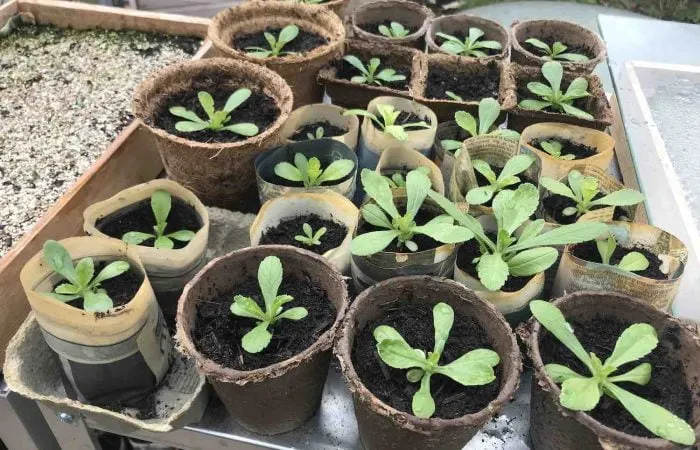
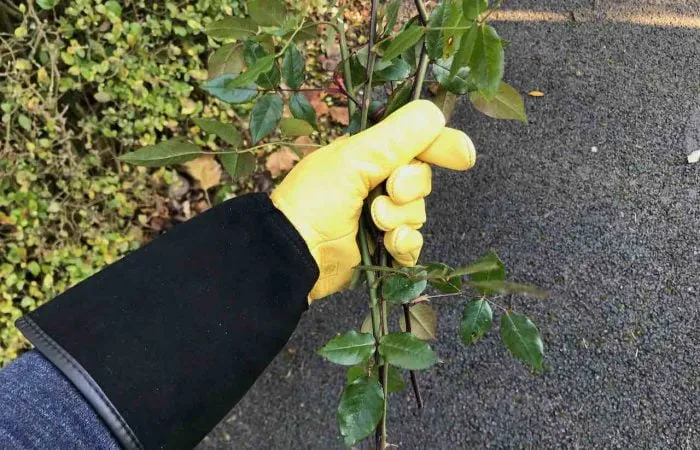
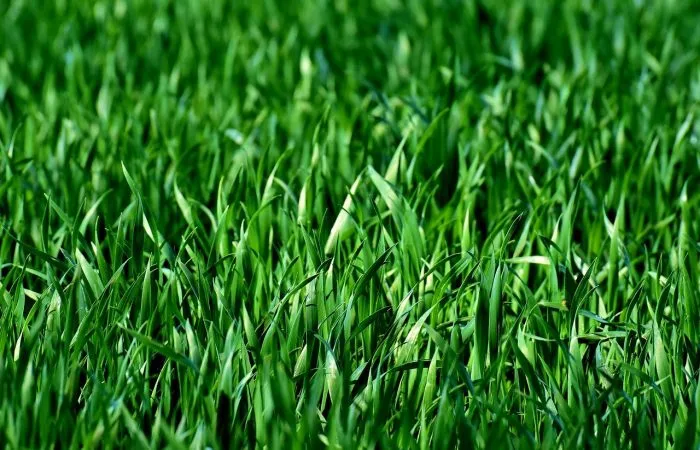
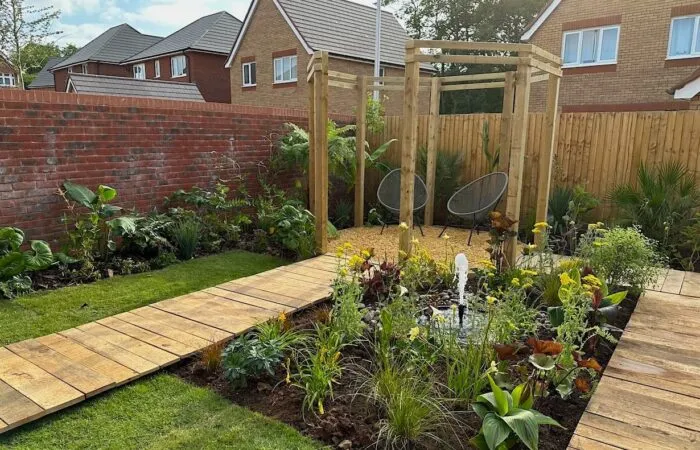
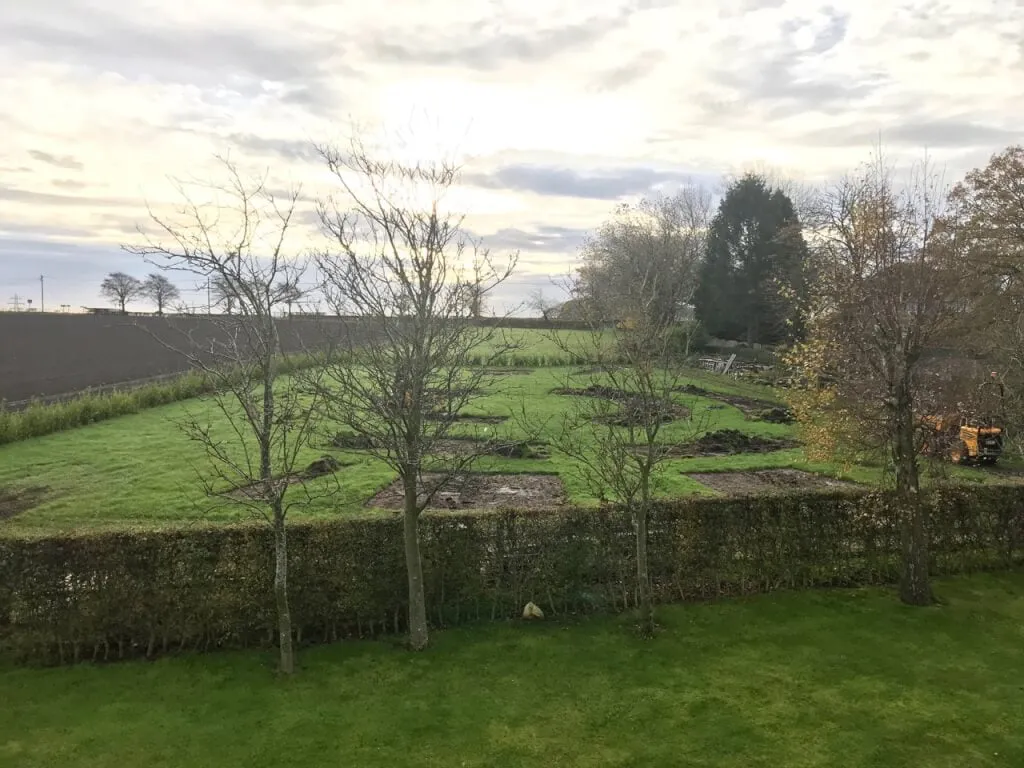
JOIN THE NINJAS

Be the first in line for new Guides, Discount codes and Offers
I adore wildflower fields. My next home will have more acreage and I fully intend to have a wildflower field out my backdoor.
Love to do this but struggling to get the seed separately where would you suggest online to get them please
Thanks sam
Hi Sam, Jekkas is a good site for wild flower and herb seeds. Try there if you’re struggling. Happy Gardening! Lee
Where did you buy the seeds of these 10 plants, please? Thanks!
Ideally, I prefer to buy the (plug or potted) plant versions of these 10 but where from?
There are no wildflower plugs/plants in local London garden centres nor nearby Essex/Chigwell and people are shocked we intend to plant weeds as base (daisies).
Hi Mac, I bought the seeds from a number of online sources here in the UK. Jekkas is really good along with Chiltern seeds. Both excellent! Good luck!
I plan to make a wildflower meadow that’s approximately 20m². I can’t sow all the seeds for this indoors.
Can I just sow directly into the ground?
And what will it look like in the autumn/winter – will it just be all dead?
Thanks!
Hi Eliska, yes you can sow these seeds directly in the ground. Just make sure you remove all turf and prepare the soil like you would for turf. There’s a guide here on my how to lay a lawn post. https://www.gardenninja.co.uk/how-to-lay-turf/ It will show you how to prepare the ground. Sow the seed in autumn for the next year. Hope that helps. Lee